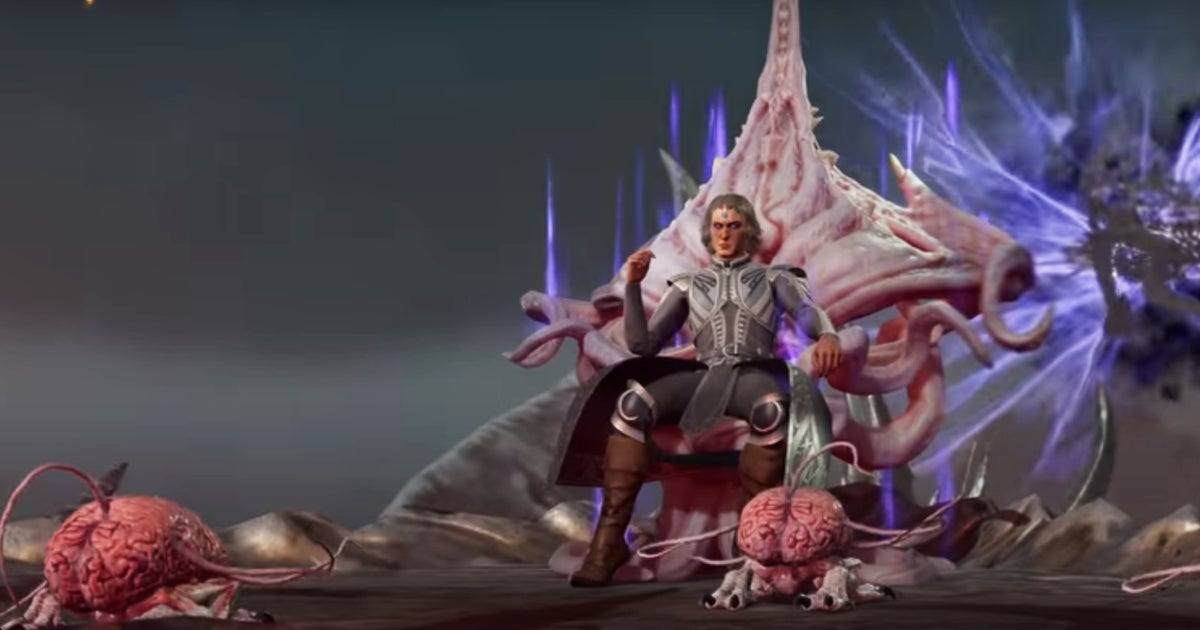Yoko Taro has an unusual talent for making the seemingly simple end up being special, and that makes his games radiate a unique appeal with extra personality. Voice of Cards: The Isle Dragon Roars, his most recent work, is no exception: it is a very classic cut JRPG that manifests and flourishes on the screen in the form of letters. A deck, by the way, exquisitely illustrated by the hand of Kimihiko Fujisaka.
Voice of Cards: The Isle Dragon Roars it is an adventure of swords, fantasy and turn-based fighting that already from its initial measures emanates certain feelings of nostalgia among those of us who lived the heyday of the genre before the turn of the millennium. What’s more, as it takes a definite shape, it licks its lips with great impudence in the essence of Square Enix classics. Both for the good and for the bad.
Because closing so much to the clichés and characteristic elements of the classic JRPGs has a very expensive price: a Voice of Cards: The Isle Dragon Roars it escapes him the exceptional status within its own genre in very essential aspects that range from the composition and triggering of the small missions, the motivations of the protagonists or the great plot and its twists.
And yet Voice of Cards refuses outright to offer the feeling of Already seen to the veteran player and, in the process, he knows how to masterfully open up to those who are suspicious or do not finish finding the point to the JRPGs. Loosely compensating for its infirmities through a different narrative style, exquisitely simple and beautifully laid out with a big but: it only displays its true greatness to those who understand Shakespeare’s language.
The dragon and the fatwa island, reimagining the essence of the JRPG

In a realm where magic, monsters, heroic deeds and alchemy are closely linked by fate itself, the appearance of a mighty dragon threatens to disrupt the peace and prosperity of its inhabitants and the delicate balance of life.
Faced with this threat, queen vanilla has delegated the mission of ending the beast to the White Order, three legendary adventurers. But Voice of Cards: The Isle Dragon Roars It is not the story of these heroes. In fact, our main hero is not the best example of nobility and chivalry, but a humble bounty hunter primarily interested in money.
The self-proclaimed hero, whom we will name, comes to the call of the queen interested only in the price that the queen has put to finish for the beast. A short-haul claim, judging by his limited sword and magic skills.

Luckily for us, the loyalty of Zafir, a mysterious and faithful creature that accompanies us, and the alliance with a young and very stubborn magician named Kuroé With which we share a purpose, it will be great for us to investigate a little more about the dragon and, in the process, get all kinds of treasures and rewards as we go along.
Despite what it might seem from the images, official videos and the title of the game itself, Voice of Cards: The Isle Dragon Roars It is not a card game, but a turn-based fighting JRPG. It has very little to do with
The Lord of the Rings: Adventure Card Game
That is to say, Voice of Cards: The Isle Dragon Roars, as a game, follow the trail of the first Dragon Quest almost reverentially:

- On the one hand, through exploration, letter by letter, in large outdoor environments and dungeons with the dressing of random battles and treasures distributed for those who decide to get lost.

- On the other hand, reserving lurban centers and other places of interest as nexus of the plot, allowing us to refuel supplies, receive orders and advance in the story.

- And of course, a turn-based combat system which, despite looking like a card game, is in complete harmony with the Enix and Squaresoft classics of 8 and 16 bits.
There are elements of their own, of course. From time to time we will have to roll the dice to resolve Events that will jump when we reach a certain point in the mapping or by chance. However, the choice of dialogues or our collection of cards – beyond potions and other game items – do not affect the development of a role-playing game which, by the way, It is completely narrated in English.
Voice of Cards: conservative in the playable, but very interesting in the narrative

For years, Square Enix has been dedicated to perfecting the identity of its great JRPG sagas, and Voice of Cards: The Isle Dragon Roars it does not contradict that legacy. What’s more, this is a large part of its essence and identity as a game. However, the way in which key elements have been rearranged makes the set really attractive to both fans of the named role. Made in Japan as for those who do not finish connecting with their mechanics.
Voice of Cards: The Isle Dragon Roars es una partida de rol narrada with your own Game Master. The narrator channels our decisions towards the orchestrated plot and, incidentally, sets the tone of what happens on screen. both during the development of the story itself and in the fighting.
Unfortunately, the Spanish version that reaches us is lackluster in this key aspect, since it is only possible to listen to the Game Master in English or Japanese, although all the texts, dialogues and descriptions of the letters can be read perfectly in the language of Cervantes. So while narration is not strictly necessary, only those who defend themselves with narrated English will be able to enjoy the experience as it was originally envisioned.

On the other hand, despite the fact that the progress system is the same that we have seen for more than three decades in the JRPGs, it must be recognized that the way of unfold the scenarios through cards, advance through these or start the fights by adding a special board adds additional points that, added to the exquisite illustrations of Fujisaka (Drakengard series) and the musical setting of Keiichi Okabe (Drakengard 3, NieR series) round out a presentation and an exceptional artistic section.
And is that Voice of Cards: The Isle Dragon Roars it masterfully simplifies menus, markers and even traditional health bars and presents them as if it were a simple game of cards that is very easy to understand and does not give up the depth that the genre requires.
Yes, obtaining new armor, weapons and spells is essential to advance. The elemental effects and even the level ups of our characters have a very important weight when it comes to fighting and progressing. But these very important elements within the JRPGs are in full service of aesthetics and narrative. And that makes Voice of Cards: The Isle Dragon Roars open with great success to that public not so friendly to turn-based fighting.

That said, in Voice of Cards: The Isle Dragon Roars yes there is a competitive experience. Or better, a more traditional card game that exists in parallel to the main adventure: once we reach our second city we will unlock a game room in which we can access from each urban center or the game’s home screen.
Unfortunately, these alternative playing card experiences based on logic and luck they do not offer the option to play two players with a couple of controls or online. Not that they are complex games or at the level of Heartshtone or Gwent, nor does it match the weight of the main game experience, but it is a shame.
iGamesNews’s opinion
To get hold of the exquisite collection of letters from Voice of Cards: The Isle Dragon Roars You will not need luck or a collector’s eagerness to refer you to the game store, but to have the determination to get the most out of a JRPG. Getting carried away by its pre-orchestrated story with charismatic characters and, from time to time, getting a little lost in its dungeons and the general map.
And the truth is that the way in which everything is presented and raised in Voice of Cards: The Isle Dragon Roars makes it cost a little take unnecessary detours. Especially when leveling up you receive a new spell card that asks to be played in a new turn-based combat.

Despite its presentation, Voice of Cards: The Isle Dragon Roars It does not reinvent or deconstruct the classic JRPG formula, but rather makes it enjoyable and accessible to all. For those who are passionate about the first Final Fantasy and Dragon Quest, as for those who simply want to discover a fantasy world in which combats are resolved with spell cards and dice rolls.
The handmade finish of your presentation, including the entry of the mats when the fighting starts, rounds out the proposal’s strongest point: its way of making mechanics that have been established for more than three decades feel almost as tangible as a board game could be, and the narrative of Game Master (in English) contributes positively to making the whole even more enjoyable.

It is a pity, as we mentioned, that multiplayer options have not been included for the game rooms, but on the other hand it is fair to say that it is more of an add-on than the main experience. Nevertheless, that the narration has not been localized into more languages it detracts from the pampering place in offering a different experience for a formula for which the years do not pass.
In any case, Voice of Cards: The Isle Dragon Roars tIt has everything you need to be the start of a new role-playing saga. To dazzle fans of the old-school JRPG and to catch those looking for a classic fantasy adventure with characters who, inevitably, end up getting a special affection.

Voice of Cards: The Isle Dragon Roars

Voice of Cards: The Isle Dragon Roars
| Platforms | PS4 (analyzed version), Nintendo Switch and PC |
|---|---|
| Multiplayer | No |
| Developer | Square Enix |
| Company | Square Enix |
| Launching | October 28, 2021 |
The best
- All the essence of the classic JRPGs reimagined in card code
- His way of simplifying the gameplay is simple and effective
- Artwork and card illustrations by Kimihiko Fujisaka
Worst
- Few contributions regarding the plot and development of the game
- That the voices have not been located in Spanish makes a good part of the essence of the game and its narrative remain by the wayside
Table of Contents










